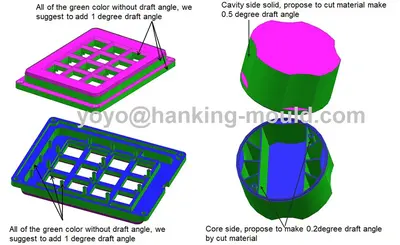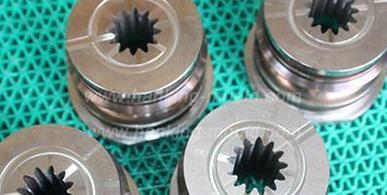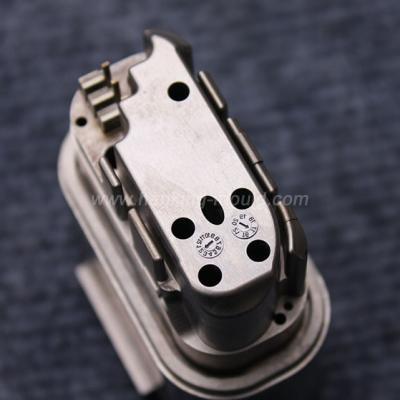

Today, we delve into the fascinating world of injection moulding. A widely used manufacturing process, injection moulding has revolutionized the way numerous products are made. However, as with any process, it's essential to understand both the advantages and disadvantages. So, let's take a closer look!
Advantages of Injection Moulding
High Efficiency and Production Output
When it comes to efficiency, injection moulding takes the spotlight. This process enables manufacturers to produce large quantities of products consistently and quickly. Compared to traditional manufacturing approaches, injection moulding significantly reduces production time without compromising quality. The ability to meet high-demand production schedules is undoubtedly one of the major advantages of injection moulding.
Design Flexibility and Complexity
The remarkable design flexibility offered by injection moulding allows for the creation of highly complex shapes and intricate details. From curves and contours to undercuts and textures, injection moulding can bring the most imaginative designs to life. Additionally, this manufacturing process accommodates the use of multiple materials, vibrant colors, and various surface finishes, enhancing the aesthetics of the final product. Furthermore, the use of rapid prototyping techniques assists in validating and refining designs before full-scale production, saving valuable time and resources.
Cost-Effectiveness and Materials Efficiency
Injection moulding not only accelerates production but also proves to be cost-effective. With its ability to produce large quantities, this process reduces labor costs and yields minimal material wastage. Particularly for thermoplastics, recycling or reusing excess plastic is feasible, effectively lowering material costs and minimizing environmental impact. By streamlining the production process and optimizing material utilization, injection moulding delivers cost-efficiency benefits across various industries.
Enhanced Precision and Consistency
Precision and consistency are vital in the manufacturing arena, and injection moulding excels in these areas. The advent of advanced technologies like computer-aided design (CAD) and computer numerical control (CNC) enables the creation of highly accurate injection moulds. This precision translates into the final products, ensuring uniform dimensions and quality across the production run. As a result, injection moulding manufacturer guarantees customer satisfaction and minimizes the risk of rejects or flaws in the products.
Disadvantages of Injection Moulding
While injection moulding offers numerous benefits, it's essential to acknowledge the high initial investment required. Machinery, molds, and skilled labor often demand a significant upfront cost. Additionally, regular maintenance and potential repairs can incur ongoing expenses. However, it's important to recognize that these costs are generally offset by the long-term advantages of injection moulding, such as increased productivity and reduced material waste.
Limited Application for Low-Volume Production
Injection moulding serves as the go-to solution for high-volume production. However, it may not be the most cost-effective approach for small, custom batches or low-demand products. Due to the initial setup and mould production costs, injection moulding becomes more viable for larger production volumes. Therefore, manufacturers requiring smaller quantities may need to explore alternative methods to avoid unnecessary expenditure.
Complex Design Modifications
Once a mould is produced, it becomes challenging to modify designs easily. Even minor changes could necessitate the creation of entirely new molds, resulting in additional costs and production delays. Due to the intricate nature of moulds, any amendments require careful consideration to ensure optimal design functionality. As a result, it's crucial to thoroughly plan and finalize designs before the plastic injection mould production stage to avoid costly alterations along the way.
Environmental Considerations
As we strive towards sustainable practices, it's crucial to address the environmental considerations associated with plastic injection moulding. The production process generates plastic waste in the form of sprues, runners, and rejected parts. Proper waste management and recycling programs are essential to minimize the environmental impact. Additionally, continuous efforts are underway throughout the industry to develop environmentally friendly alternatives, encouraging more responsible plastic injection molding practices.
Conclusion
Plastic injection moulding undoubtedly offers numerous advantages, making it an invaluable process in various industries. We've explored its high efficiency, design flexibility, and cost-effectiveness. Additionally, the precision and consistency it delivers contribute to the overall appeal. However, alongside these advantages lie certain challenges, including high initial costs, limited application for low-volume production, complex design modifications, and environmental concerns.
By understanding both the pros and cons, manufacturers can make informed decisions regarding the suitability of plastic injection moulding for their specific product or project. Furthermore, ongoing research and innovation are vital to address the challenges mentioned and further enhance the benefits offered by this remarkable manufacturing process.
We hope this curated exploration of injection moulding has provided you with valuable insights. Stay tuned for our upcoming blogs, where we continue to delve into exciting topics and deliver curated content tailored to your interests!






 Call us on:
Call us on:  Email Us:
Email Us:  No.23, XingYi Road, Wusha Community, Chang'an Town, Dongguan City, Guangdong Province, China.
No.23, XingYi Road, Wusha Community, Chang'an Town, Dongguan City, Guangdong Province, China.